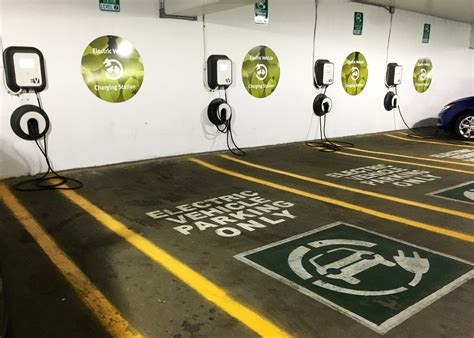Plugging In Savings: Your Guide to EV Charger Installation Rebates
As electric vehicles (EVs) become increasingly prevalent on our roads, the need for convenient and accessible charging options has surged. One of the best ways to ensure a smooth transition to EV ownership is by investing in a home charging station. Fortunately, many governmental and private programs offer rebates and incentives to help offset the costs of purchasing and installing EV chargers. In this article, we’ll explore the various rebates available, the installation process, and tips to maximize your savings.
The Importance of Home Charging Station
Having a home charging station not only provides convenience but can also lead to significant savings in the long run. Unlike gas prices, the cost of electricity is generally more stable and predictable. This allows EV owners to plan their fuel expenditure with ease, often resulting in lower overall costs compared to conventional vehicles.
Understanding EV Charger Installation Rebates
Various rebates are available depending on where you live. These can come from federal, state, or local government programs, as well as utility companies and private organizations. Here’s a breakdown of what to expect:
Federal Rebates
At the federal level, the U.S. government offers tax credits for residential EV charging equipment. As of 2023, the federal tax credit allows homeowners to claim 30% of the costs associated with purchasing and installing an EV charger, up to a maximum of $1,000. This can significantly reduce your out-of-pocket expenses.
State and Local Incentives
Many states have their own rebate programs aimed at promoting EV adoption. For example, California offers several incentives, including the California EV Infrastructure Project, which can provide substantial funding for charger installations. It’s wise to check your state’s energy department website for specific programs, as these can vary widely.
Utility Company Programs
Utility companies often have their own rebate programs to encourage residents to switch to electric vehicles. These can include discounts on installation labor, as well as rebates for purchasing specific charging equipment. Some utility companies might also offer time-of-use rates, enabling users to charge their EVs during off-peak hours at a reduced rate.
The Installation Process
Installing a home EV charger can seem daunting, but understanding the process can help alleviate concerns. Here’s a step-by-step breakdown:
1. Assess Your Electrical System
Before installation, it’s crucial to consult with a qualified electrician to determine if your home’s electrical system can support an EV charger. Depending on the existing infrastructure, additional upgrades may be needed.
2. Choose the Right Charger
There are various charging options available, from Level 1 chargers (which plug into standard outlets) to more powerful Level 2 chargers. Evaluate your needs, your vehicle’s charging requirements, and potential rebates when selecting a charger.
3. Obtain Necessary Permits
Most installations require permits for electrical work. Your electrician should handle this, but it’s important to ensure that all local regulations are adhered to.
4. Installation Day
Once everything is in place, the actual installation can be completed within a day, depending on the complexity of your home’s electrical setup.
Maximizing Your Savings
To make the most of available rebates and minimize installation costs, consider these tips:
1. Research Rebates Thoroughly
Before purchasing a charger, take the time to research all available rebates thoroughly. Many states offer varying amounts, and requirements can change frequently.
2. Work with Qualified Installers
Choosing certified and experienced electricians can help ensure that your installation meets all safety and regulatory standards, which may also qualify you for specific rebates.
3. Plan for Future Needs
Consider a charger that meets not just your current needs, but also potential future endeavors, such as an electric vehicle with a larger battery or additional EVs in your household. Opting for a higher capacity charger may cost more upfront but could save you money in the long run.
Conclusion
Investing in a home EV charger is a significant step towards sustainable transportation and energy independence. With numerous rebates and incentives available, homeowners can significantly offset the costs associated with installation. By understanding the various programs, following the installation process, and implementing strategies to maximize savings, transitioning to an electric vehicle can become a more accessible and economical choice. Whether you are new to the world of electric vehicles or looking to upgrade, plugging in savings with EV charger installation rebates is an opportunity worth exploring.
FAQs
1. What types of EV chargers are available for home installation?
There are primarily two types of chargers: Level 1 and Level 2. Level 1 chargers use a standard outlet and are typically slower, while Level 2 chargers require a dedicated home charging station and offer faster charging times.
2. How much can I save through EV charger installation rebates?
Savings can vary widely based on your location and available programs. Federal tax credits can cover up to 30% of installation costs, while state and local incentives can add additional savings.
3. Do I need a special electrician to install an EV charger?
While any qualified electrician can install an EV charger, it’s beneficial to choose one with experience in EV charger installations, as they will be familiar with local codes and standards.
4. How can I find local rebates for EV charger installation?
The best place to start is your state’s energy department website. Additionally, utility companies often provide information about their own rebate programs.
5. Are there any ongoing costs associated with owning an EV charger?
Yes, you may see an increase in your electricity bill, especially if you charge during peak hours. It’s wise to consult your utility provider about time-of-use rates that could help mitigate these costs.
Download Ev Charger Installation Rebate
